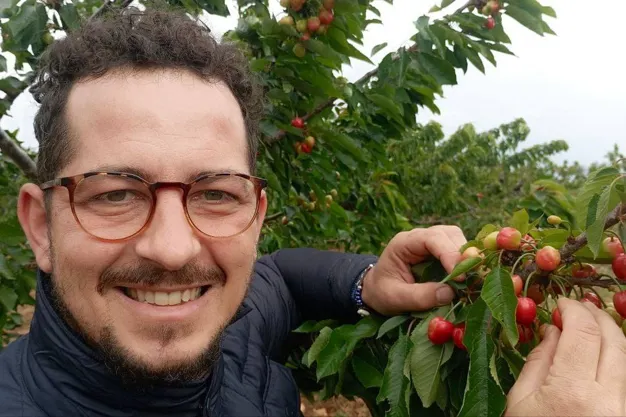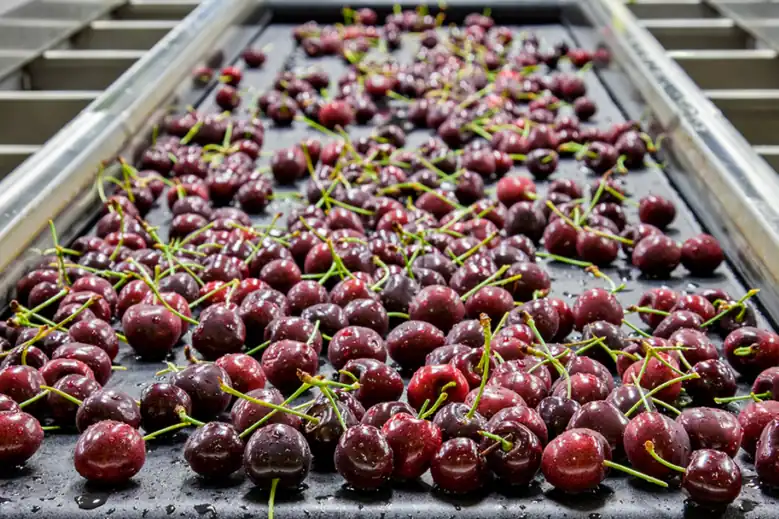The harvest of cherries for Sage Fruit is extensive in the Northwest cultivation regions and with high quality expectations.
Overall, the company expects an excellent harvest of cherries from its orchards spanning from southeast Washington, through The Dalles and Hood River in Oregon, to the Yakima Valley in Washington, then north through Wenatchee and Chelan in Washington, up to the Canadian border.
"Our teams have invested heavily in packaging line equipment to ensure that only high-quality products are shipped to our retail and wholesale partners," said Kaci Komstadius, vice president of marketing at Sage Fruit in Yakima, Wash. "Our lines are equipped with an optical sorting system that facilitates the removal of internal and external defects from the fruits."
The outlook for the harvest is good, she added. Sage Fruit will sell both dark sweet cherries and Rainier cherries and offer both conventional and organic fruit.
"The Pacific Northwest experienced a relatively mild winter and beautiful spring weather, which led to a good blossom for cherries," Komstadius said. "We reached full bloom in our earliest districts by late March, which is much earlier than last season, putting us two weeks ahead of the 2023 harvest (beginning June)."
The climate in the Pacific Northwest has been ideal for cherry cultivation, and we expect a harvest of high quality and flavor for this season, which is expected to last until mid-August. According to industry estimates as of mid-May, the Northwest harvest ranges between 16 and 18 million boxes for this season, Komstadius stated.
"Given the exceptional growing conditions, we expect to see many large and high-quality fruits this year, with excellent promotional opportunities," she stated. Sage Fruit has cherry packing facilities in Yakima and Chelan, Washington.
The harvest of Northwest cherries represents approximately 2.5-3% of the total volume of cherries. Sage Fruit's organic cherries account for about 2% of the total cherry volume, Komstadius said. "Currently, the [organic] volume at the industry level does not appear to be growing, but with organic trends, it is reasonable to think it will grow in the future," she said.
Marketing Moves
Komstadius stated that Sage Fruit's sales and marketing teams specialize in creating unique and personalized seasonal programs to meet customer needs. "With various styles of packaging, sizes, and POP materials available in-store, our goal is to help customers maximize sales through a personalized approach," she said.
Visibility is crucial, both in-person and online sales. Secondary displays, category size and placement, and ad frequency all play a crucial role in increasing cherry sales.
"One in four Americans buys cherries each year, and 72% of purchases are impulse," Komstadius said. Retailers can take advantage of this situation by setting up a secondary display at the entrance or near the checkout." Currently, Sage Fruit provides specific point-of-sale containers for cherries to all our retail and wholesale partners, free of charge.
"Secondary displays increase volume by 13.6% and value by 22.4% in dollars," the expert continued. "Keeping cherries in front of consumers throughout the season is the best way to maintain sales, whether through circular ads or multiple placements throughout the store. Promotions increase sales, while simple price cuts do not attract attention."
Komstadius stated that cross-merchandising is also encouraged. "Cross-merchandising with other recipes and usage ideas such as oatmeal, meat marinades, sauces, jams, dips, and pies shows that cherries are an expandable category."
Bags continue to be the primary packaging type demanded by retail partners, although the industry has moved away from standard Ziplocs and is now packaging in bags, Komstadius said.
"Clamshell bags are available but are used less frequently, and when they are, it is usually for merchandising needs and/or due to the lack of a scale, as they are sold by count rather than by pound," Komstadius said.
Northwest cherries are in high demand globally, and Komstadius expects that approximately 30-35% of the Northwest cherry crop will be exported in 2024.
Source: The Packer
Image: SL Fruit Service
Cherry Times - All Rights Reserved












